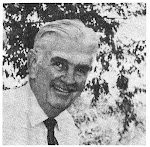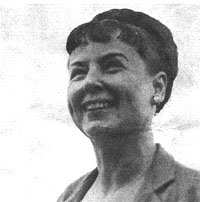I’ve eagerly anticipated reviewing The Book of Indians. But first I had to buy the book ($12, used, through Amazon). And read it, pushing aside other commitments. And doing some background investigation.
It’s necessary to begin by repeating that Holling and his wife Lucille were, among all their other qualities, authentic writers, illustrators, naturalists and historians. After marrying in 1925, they traveled extensively throughout the Southwest. (Holling’s first exposure had been a year-long stay in New Mexico after graduating college in 1923.)
Their work reflected their knowledge, as described by Hazel Gibb Hinman in her Master’s thesis in 1958. She reports that in 1929, they stayed at the Nine Quarter Circle guest ranch northwest of Yellowstone Park, helping design the buildings. Traveling that winter up to Alberta, Canada, they took a tepee for camping. (Going to search for tent poles, they came back to find tribeswomen had already set up their tent.) After returning to the ranch to finish their work, they went on to Lubbock, Texas, to paint murals. Then it was out to California, sketching and writing, with their Coleman stove, tent and camping equipment. Never staying overlong in one place, they drove back to Phoenix at rodeo time where they drew and painted, selling their work to finance their travels. (Ms. Hinman notes that in 1934 Holling demonstrated his fire-making skills at a luncheon lecture, starting a fire with two sticks in just seven minutes and so impressing a club member that he asked Holling to design his restaurant.)
That was just the winter of 1929, and all the while Holling and Lucille were making notes and sketches for two collaborative landmark books, The Book of Indians, (published in 1935 by Platt & Munk) and The Book of Cowboys (published a year later).
The Book of Indians attempts a grand perspective on North American tribes people in 13 chapters: An introduction into the “types of Indians living in different kinds of country,” four chapters about the home life of children and eight chapters relating their adventures. The book is essentially divided geographically among People of the Forests and Lakes, the Plains, the Deserts and Mesas, and the Rivers and the Seas
There are six beautiful colored illustrations in the plein-art style of the Southwest, plus many, many sidebar illustrations of children, their homes, tools and weapons, graphic artwork, and animals. The sepia pen-and-ink style drawings make a reader linger and digest each detail of the small pictures in the margins.
A critical element of this children’s book are the cultural and historical distinctions made by the Hollings. The Native American nations were as different from each other as the European countries, and this is explained in the first chapter. Most dramatically, the Plains Indians changed radically from planters to hunters when horses were introduced in the 1600s. The horse might well have been the cultural equivalent of the Industrial Revolution in Europe.
I believe we can forgive someone writing in the 1930s about misconceptions that today would be viewed as culturally suspect. Columbus did not think he had arrived in India. (The Spanish term might originally have been hijos in Dios—children of God.) And when a tribes person died it’s insensitive to say “He went to the Happy Hunting Ground.” But these lapses are rare in comparison to the facts that abound: how teepees are constructed and how they evolved, tool-making, housing adapted to the environment, and plant life that forms lifestyles. Happily, the Hollings provide a glossary of 31 words any pre-teen child should be familiar with.
The Book of Indians is first and foremost educational — and of particular value to home-schooled children. The writing is generally expository, with touches of drama to make the lesson more amiable. The narratives of the children, who are the main characters driving each of the geographical sections, are somewhat two-dimensional. In this, Holling’s narrative ability developed tremendously in the decade until Paddle-to-the-Sea was published. However, the Indian children’s plotting and personalities do grow toward the end when Raven joins the whale hunt and almost drowns (pp. 109-110) and when the slave child Cedar Bough negotiates her freedom by finding a great cache of copper (pp. 115-118).
The success of Holling’s writing also lies in its simplicity. As I’ve mentioned elsewhere, Holling's Paddle-to-the-Sea has a Fog Index of 6.9, meaning 91% of everyday words we use are more difficult to read. His Flesch Reading Index score is 75.2, meaning 90% of other vocabulary is harder. (A Flesch score of 90-100 means the writing is understood by an average 11-year-old.) And no one complains because something is too simple. Or because it lacks entertainment. So generations return to Holling Clancy Holling’s remarkable writing — and his wife’s collaborative illustration — year after year.
Tuesday, July 8, 2014
Subscribe to:
Posts (Atom)









